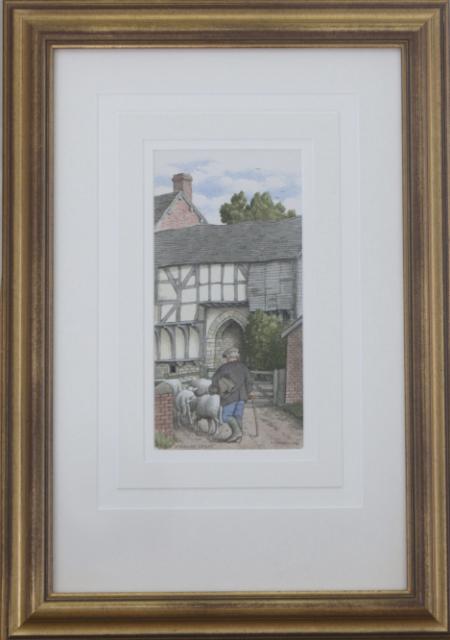Wigmore Lodge

Wigmore Lodge
Watercolour: Signed, inscribed and dated 1994
Image: 8ins x 4ins - Framed 17ins x 12ins
Suggested Offer: £1,250
Wigmore Abbey was an Augustinian abbey with a grange, from 1179 to 1530, situated about a mile north of the village of Wigmore, Herefordshire, England. Only ruins of the abbey now remain.
The abbey was founded by Ranulph de Mortimer and his son, Hugh de Mortimer in 1179 in the parish of Leintwardine. The construction of the abbey was also assisted by other local landowners including Brian de Brampton, who contributed building materials from his woods and quarries. At the time it was the largest monastery in the county, followed by Abbey Dore and Leominster Priory.
The abbey continued to flourish until the period of the dissolution of the monasteries in 1530, when it was destroyed. The remains of the building were given to Sir T. Palmer.
Wigmore Abbey is thought to be the place of origin of a manuscript outlining its own history and founding, as well as the lineage of Roger Mortimer, whose father Edmund petitioned Parliament to be named heir to the throne in 1374. His claim was ignored by King Henry IV's succession. The Chronicle of Wigmore Abbey is now housed at the University of Chicago.
The land encompassing the abbey remains was owned by the Powell family, and later by the Brierley family, before the ruins themselves were sold to British actor John Challis (best known as Boycie from Only Fools and Horses), while the fields and remaining buildings were bought by farmers.[citation needed]
As of 2002, the ruins of the abbey were the property of John Challis, who lived in the abbot's lodging, the only building to survive. The TV programme The Green Green Grass starring John Challis was filmed at Wigmore Abbey along with other locations in the area.
Whilst Norman was sketching his preparatory drawings for this painting he was approached, somewhat understandably, by the owner but after a short discussion and explaining the reasons for his presence, he was allowed to continue.
